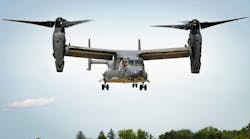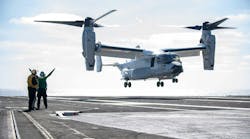Washington, DC – More than 50 aviation safety leaders from industry and government came together earlier this month at the University Corporation for Atmospheric Research offices in Washington DC to discuss the future of helicopter infrastructure within the realm of the low altitude environment of the National Airspace System.
The infrastructure summit was designed as an industry and government collaborative effort comprised of groups that are involved with; impacted by; have federal, state or local regulatory oversite, jurisdiction and/or enforcement of; or provide general advisory/council on:
- Aviation Weather Gathering, Dissemination & Reporting
- Heliport Safety, Standardization, Education and Oversight
- Low Altitude IFR Infrastructure Design and Integration
During the two-day summit, government and industry experts participated in discussions for the purpose of advancing low level infrastructure for helicopter operations during the next 30 years.
A few of the key initiatives that came out of the Summit were:
- Suggest additional enhancements to the Aviation Weather Center product.
- Support integration of the Automated Weather Observing System into the National Airspace Data Interchange Network and the Meteorological Assimilation Data Ingest System.
- Improve heliport information within the national 5010 airport master record database.
- Promote safer IFR helicopter operations.
- Support approach and departure criteria standardization, heliport standardization, and route standardization.
Spearheading this first of its kind effort for the U.S. Helicopter Safety Team were Tom Judge of LifeFlight of Maine, Steven Sparks of the FAA, Rex Alexander of HeliExperts International and USHST member Rachel Miller-Tester.
Representatives involved in the issues came from AgustaWestland, Air Medical Operators Association, Airborne Law Enforcement Association, Airbus Helicopter, Aircraft Owners and Pilots Association, American Health & Safety Institute, Association of Air Medical Services, Aviation Weather Center, Belfort Instrument Company, Bell Helicopter, Boston MedFlight, Eastern Region Helicopter Council, Halcyon Heli Limo, Helicopter Assoc Intl, HeliExperts International LLC, Hughes Aerospace Corp., LifeFlight of Maine, LZControl, Maryland State Police, MDZ Associates, National Agricultural Aviation Association, National Association of State Aviation Officials, National Business Aviation Association, National Center for Atmospheric Research, National EMS Pilots Association, National Fire Protection Association, National Oceanic and Atmospheric Administration, SevenBar Aviation, Sikorsky Aircraft, University Corporation for Atmospheric Research, U.S. Coast Guard, U.S. Dept. of the Interior, U.S. DOT, U.S. FAA, U.S. Forest Service, and the U.S. NTSB.
The USHST is part of the International Helicopter Safety Team (www.IHST.org), an organization that was formed in 2005 to lead a government and industry effort to address a growing helicopter accident rate.



